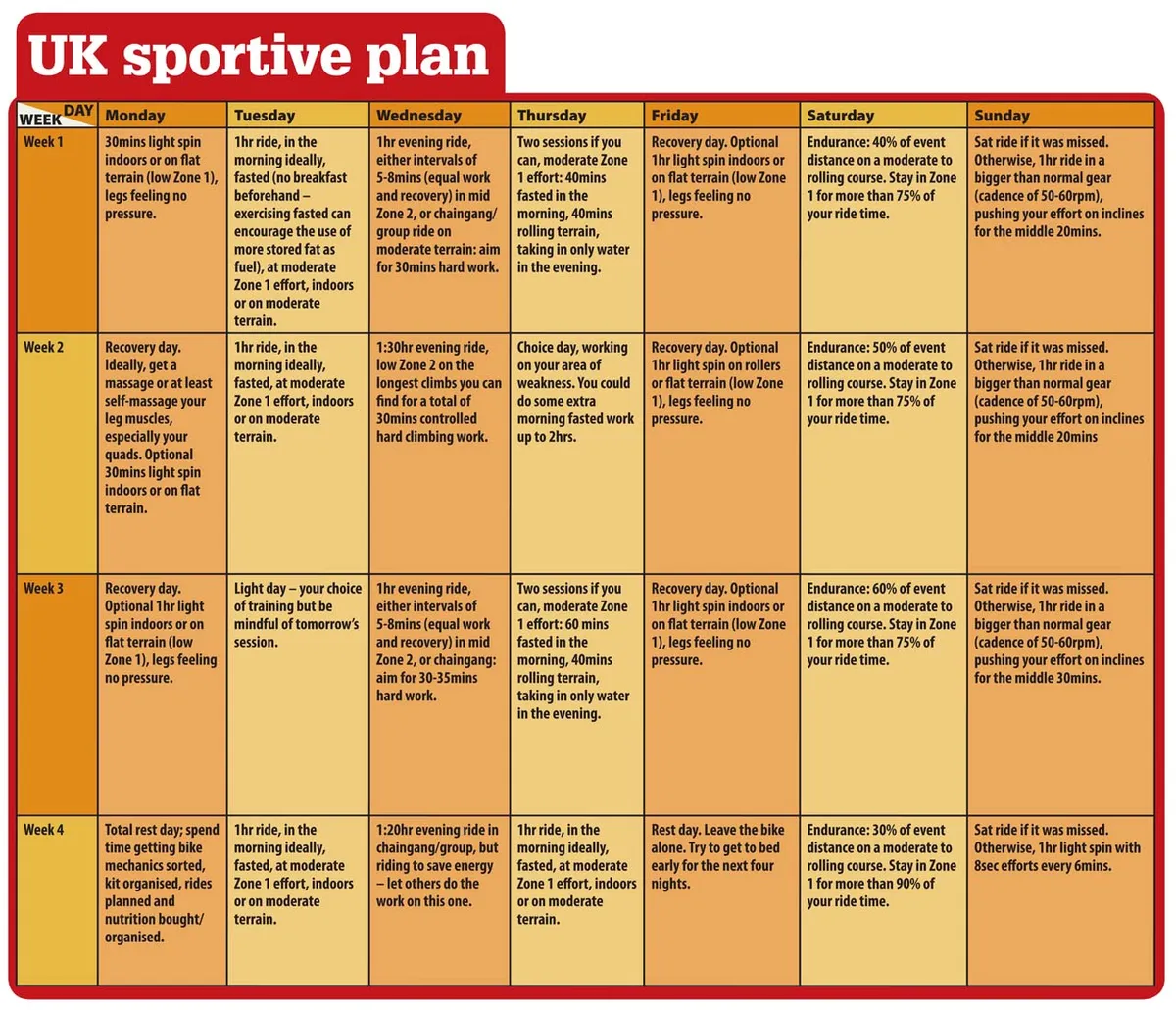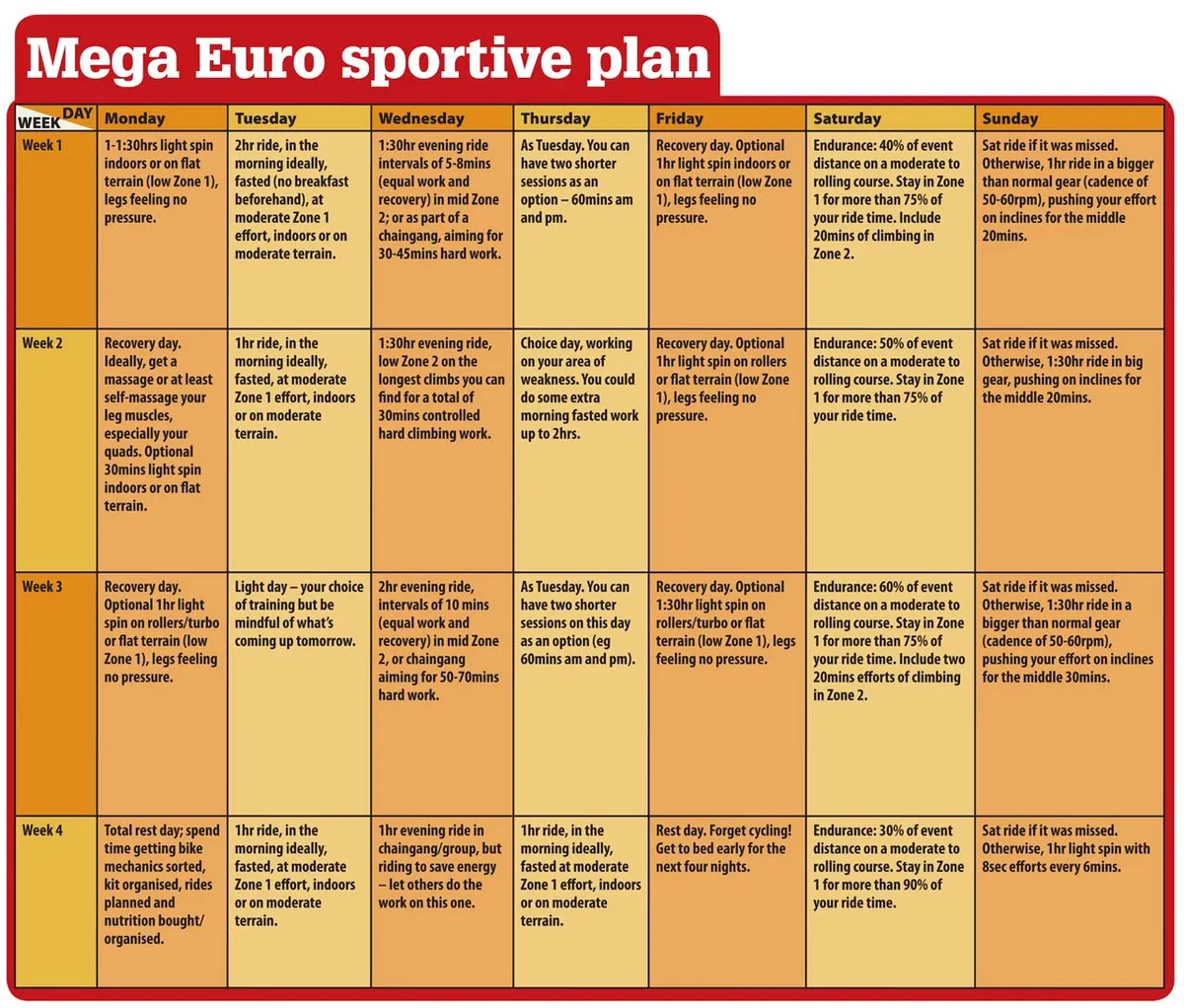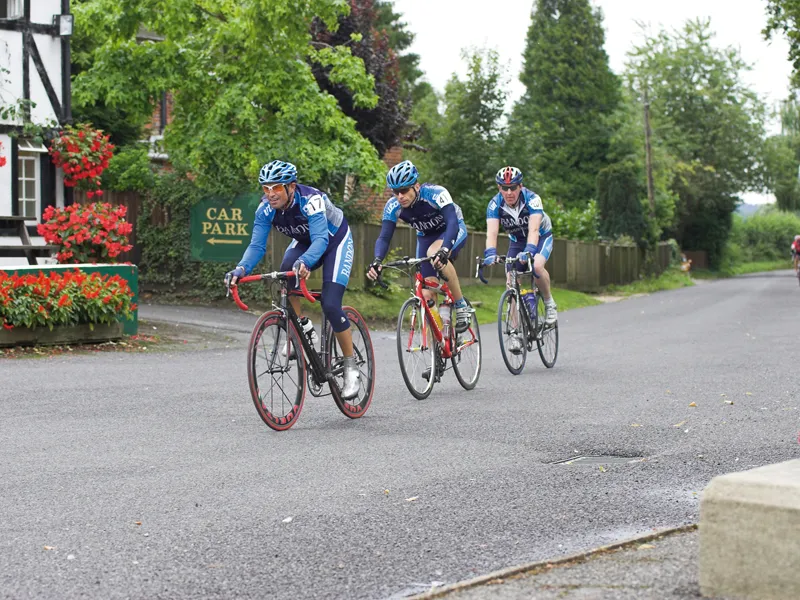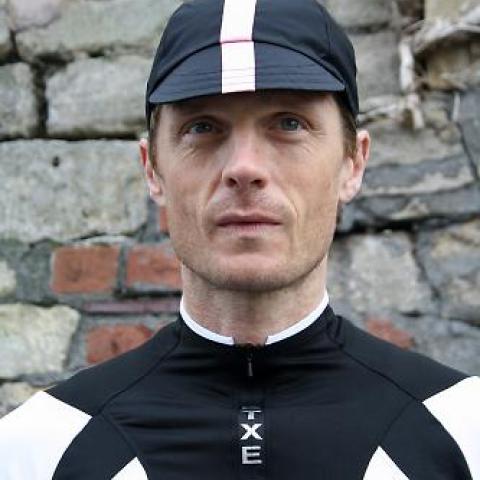Sportives are among the most exciting and satisfying events on two wheels. They’re also extremely demanding. Get it right and your day will go like a dream; you’ll enjoy fantastic riding, good company and the satisfaction of a job well done.
Get it wrong and there’s a whole world of pain coming your way. The difference between the two is in the preparation. As the wise old man says, “Proper planning prevents poor performance.”
Set your goal
1. First you need to choose your event. Be realistic. If you took up cycling only a couple of months ago and you’re lacking bike fitness, don’t enter a monster slog through the French Alps. Challenging, yes. Sensible, no. Instead, tackle an event like the 100km Cycling Plus Sportive at BikeRadar Live.
2. Next think about exactly what you want to achieve on your ride. Will you be happy simply to finish? Or maybe you want to improve on last year’s time, or cross the line in the top 30 per cent of the field. Are you completing, competing or conquering? Again, be reasonable. Set an impossible aim and you’ll soon lose motivation.
3. Once you have your goal sorted, write it down and put it in your wallet, next to your computer, on the dashboard or fridge door… anywhere you’ll see it often to help keep you focused.
Know your SWOT and work to it
Once you’ve sorted your goal, make a list under four different headings:
- Strengths: Your attributes that are helpful to achieving your goal, such as good aerobic fitness or your high commitment to training
- Weaknesses: Your attributes that are harmful to reaching your goal, such as a lack of climbing ability
- Opportunities: External factors that are helpful; perhaps the possibility of getting a new bike or going on a training camp
- Threats: External factors that are harmful to your goal, like the need to move house or change jobs, or a fellow rider who will cause you to self-destruct if you ride with them too often
Once you’ve identified each category, you need to think about how you can maximise your strengths and opportunities, and eliminate or minimise the impact of the weaknesses and threats. How can you ensure you get onto that training camp? How are you going to improve your climbing? It’s not always easy, but it’s time well spent.
Get your long rides in
We all miss occasional planned rides – life has an annoying habit of getting in the way of the important stuff – but even if you can’t do high mileage rides all the time, don’t miss your long rides in the big overload period at the heart of your training; they’re vital.
- Bad weather? Go out anyway; you could get bad weather on event day.
- Bike’s broken? Fix it, or get your bike shop to sort it – and learn how you could have done it out on the road.
Your long rides are when your body gets used to handling the demands you’ll face on the big day; they help you learn to draw on your fuel reserves more efficiently, and they get your head prepared for long, demanding efforts.
Develop your technique
Get used to incorporating technique work into your general rides and devote regular sessions to improving your skills.
- Focus on descending: Find a long, winding hill and time yourself down it over several runs, looking to get quicker by laying off the brakes, leaning into the corners and learning when to put the power back on. Be careful, though, do this with a riding mate and on quiet roads where you can easily see any approaching traffic. And don’t think you can make up for poor climbing by flying downhill.
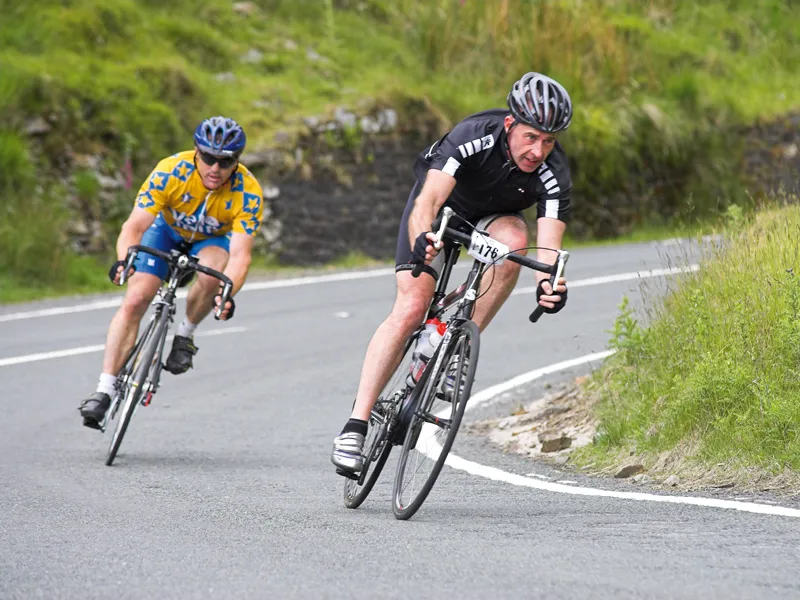
- Spend some time in the slip-stream: Sheltering from the wind in a pack saves you masses of power output from your legs (around 20 per cent) and will improve your sportive finishing time, so practise in regular group rides and local road races. The more comfortable you are riding in close formation, the more time you can save. If you spend all your time on the turbo or solo riding, you won’t have the skills to ride with others on the big day.
Develop your lactate threshold and muscle power
Lactic acid is produced when your body breaks down carbohydrate for fuel, resulting in lactate in your blood that affects your muscles’ performance. Get that? All you really need to know is that the point at which lactate starts to accumulate faster than you can disperse it is your lactate threshold (LT), and raising this will help you ride a faster sportive.
Working on your power is important too for increasing the amount of force you can put into every pedal stroke and also for increasing endurance.
As you’ll see from the training programs, we recommend regular high intensity rides devoted to LT and strength work. Get these sessions in and you’ll be rewarded on the big day.
Rest and recover!
You don’t get fitter when you’re riding, you get fitter when you recover afterwards, which is why you need to have at least one day without exercise every week, possibly more if you over-stretch yourself, as well as an easy week every month.
Using our training plans
Over the next three months we'll be publishing a series of training plans designed to prepare riders of all abilities for the 100km and 100-mile events at BikeRadar Live. We'll also be explaining how to prepare for a European 'mega sportive'. To be ready for the Cycling Plus Sportives on 30 May, you'll need to start the first plan on 9 March.
We've kept things simple by using just three different zones of training intensity in our programs. You can make sure you're exercising at the right level either with a heart rate monitor (HRM) or by using perceived exertion – how hard you feel you're working.
If you use an HRM, our zones are based on your maximum heart rate (max HR). Subtracting your age from 220 will give you a theoretical max HR, but it can be inaccurate – sometimes wildly out.
- Zone 1: 60-80% max HR (60-75% if you are getting back to fitness or lack stamina). This is light to moderate effort; breathing and conversation is easy.
- Zone 2: 80-89% max HR (75-85% if you are getting back to fitness or lack stamina). Moderate to hard effort, though it is controlled and you're not about to blow up.
- Zone 3: Around 90% max HR and above (85% and above when lacking fitness). Very hard; breathing is laboured and lactate makes your muscles burn.
Training plans
Click on the plans to open a larger version.

